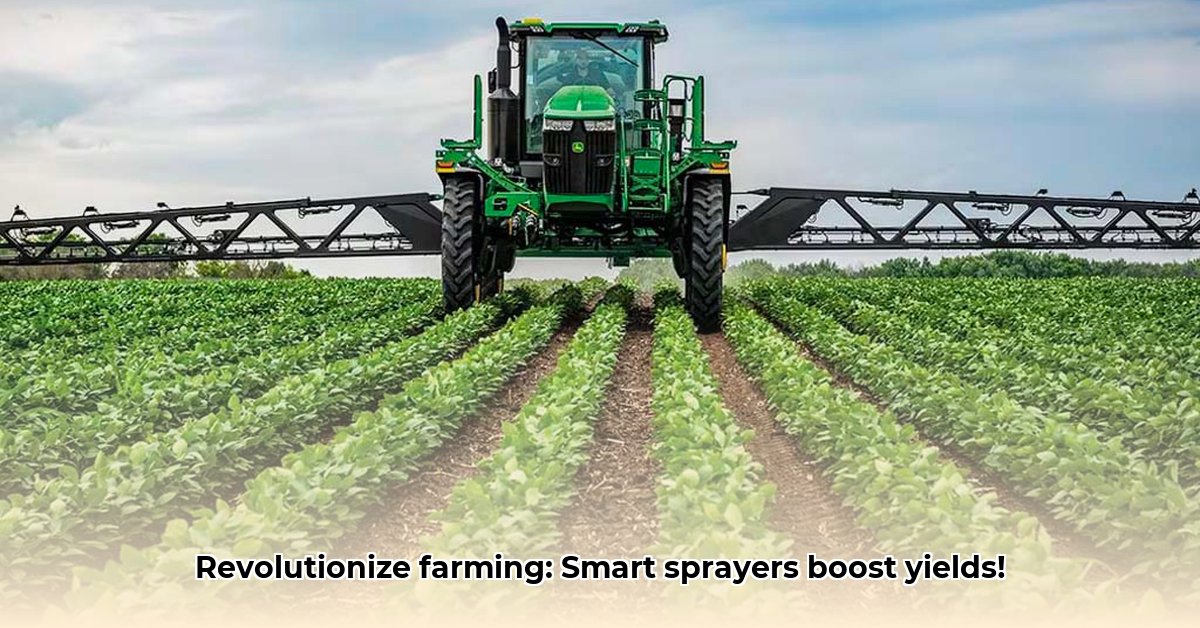
Choosing the right crop sprayer tractor is crucial for maximizing efficiency and profitability in modern agriculture. This guide provides a comprehensive overview of available technologies and best practices for implementing precision spraying in sustainable farming operations. For more detailed information on sprayer types, check out this helpful resource: Sprayer options.
Selecting Your Ideal Crop Sprayer Tractor
The optimal choice depends on farm size, crop type, terrain, and budget. Three primary categories exist:
1. Pull-Type Sprayers
These are towed behind a tractor, offering affordability and simplicity, ideal for smaller farms or simpler fields.
Pros: Lower initial cost, ease of operation and maintenance.
Cons: Limited maneuverability, requiring a separate tractor.
2. Self-Propelled Sprayers
Independent units providing superior precision and control, particularly beneficial in larger fields and uneven terrain.
Pros: Excellent maneuverability, precise application, independent operation.
Cons: Higher initial cost, more complex maintenance.
3. Mounted Sprayers
Attached directly to a tractor's three-point hitch, offering a cost-effective solution for smaller operations.
Pros: Compact and convenient, cost-effective.
Cons: Limited capacity, less maneuverability.
Here's a comparison table summarizing key differences:
| Sprayer Type | Best For | Pros | Cons |
|---|---|---|---|
| Pull-Type | Smaller farms, simpler terrain | Affordable, simple operation | Less maneuverable, requires a separate tractor |
| Self-Propelled | Larger farms, complex terrain | Highly maneuverable, precise application, independent | Higher initial cost, more complex maintenance |
| Mounted | Smaller farms, simple terrain, orchards | Compact, cost-effective | Limited capacity, less maneuverable |
Precision Spraying Technologies: Smart Spraying for Smarter Farming
Precision spraying minimizes chemical use, protecting beneficial insects and soil health. It works by using sensors and cameras to identify weeds or diseased plants, then applying chemicals only to targeted areas.
Key Technologies:
- Camera-based systems: High-resolution cameras identify weeds and targets.
- Sensor-based systems: Sensors detect variations in soil or plant health.
- AI-driven decision-making: Algorithms optimize spray patterns and reduce chemical use.
Isn't it amazing how technology is transforming agriculture? Precision spraying is a prime example of how innovation is driving both efficiency and sustainability. What questions do you have about the implementation of these technologies?
Implementing Precision Spraying: A Step-by-Step Guide
1. Pre-Spray Planning: Plan carefully, selecting appropriate chemicals, safety equipment, and calibrating the sprayer for accurate application.
2. Calibration and Setup: Follow manufacturer instructions, considering nozzle type, spray pressure, and travel speed. Accurate calibration is crucial for efficiency and cost savings. How important is calibration to successful precision spraying? It's essential for optimal application and avoiding waste.
3. Safe and Efficient Application: Adhere to manufacturer instructions, wear PPE, follow safety regulations, and be mindful of wind conditions to minimize drift. What are the most common safety concerns when operating crop sprayers? Proper training and adherence to safety protocols are paramount to safe operation.
4. Post-Application Analysis: Analyze data collected by the sprayer using software to generate maps showing application rates, coverage, and more. This data informs future strategies and continuous improvement.
Data Management and Analysis: Turning Data into Dollars
Modern sprayers generate substantial data. Effective data management and analysis are key to maximizing ROI. Farm management software can consolidate this data, enabling informed decisions for future spraying operations. What percentage of farms currently utilize farm management software to analyze sprayer data? The adoption rate is steadily increasing as more farmers recognize the value of data-driven decision-making.
Regulatory Compliance and Long-Term Sustainability
Adhere to all local regulations concerning herbicide use, chemical disposal, and data privacy. Precision spraying contributes to:
- Reduced chemical use: Minimizing environmental impact.
- Improved soil health: Reducing soil degradation.
- Enhanced biodiversity: Protecting non-target organisms.
Choosing Your Perfect Sprayer: A Decision-Making Guide
This table assists in selecting the optimal sprayer based on specific needs:
| Criteria | Self-Propelled | Pull-Type | Mounted |
|---|---|---|---|
| Farm Size | Large | Medium-Large | Small-Medium |
| Crop Type | Row Crops, large fields | Row Crops, large fields | Orchards, Vineyards |
| Terrain | Relatively flat | Relatively flat | Varied |
| Cost | High | Medium | Low |
| Precision Tech | Often integrated | Can be added | Less common |
| Maneuverability | High | Moderate | High |
Case Studies: Real-World Success Stories
Numerous farmers have reported significant benefits from precision spraying, including cost savings and environmental improvements. These case studies demonstrate the technology’s potential for boosting yields while minimizing environmental impact.
Conclusion: A Smarter, More Sustainable Future for Farming
Smart crop sprayer tractors and precision spraying technologies are revolutionizing agriculture. Although initial investment is required, the long-term benefits – increased efficiency, higher yields, and reduced environmental impact – make it a worthwhile investment in a more sustainable agricultural future.